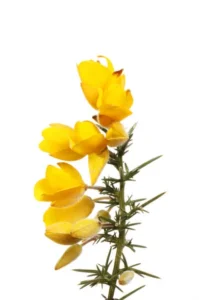
Something BIG is Stirring
We Need Your Support to Rewild Aotearoa

How to regenerate New Zealand native bush!
The Prickly Controversy: Gorse – Friend or Foe?
As European settlers spread across the fertile lands of New Zealand in the early days of the colony, a prickly controversy took root quite literally. The humble gorse plant, with its vibrant yellow blooms and formidable thorns, became an unlikely flashpoint in the debate over nature’s role in shaping the new landscape.
Introduced from Western Europe, gorse was initially recorded by the renowned naturalist Charles Darwin during his voyage through New Zealand waters in 1835, growing in hedges in the Bay of Islands. Its spread and adaptation to the temperate climate of the islands was rapid, but the settlers failed to recognize the potential threat. Gorse seed continued to be imported, and plantings were deliberately established well into the 1900s.
 On the vast Canterbury Plains, gorse found a particularly welcoming home, its dense thickets stretching for a combined length of 300,000 kilometers, serving as hedges and windbreaks for the burgeoning agricultural settlements. But as the colony grew, so too did the divide over how to manage this tenacious plant.
On the vast Canterbury Plains, gorse found a particularly welcoming home, its dense thickets stretching for a combined length of 300,000 kilometers, serving as hedges and windbreaks for the burgeoning agricultural settlements. But as the colony grew, so too did the divide over how to manage this tenacious plant.
Some saw the gorse as a scourge, an invasive weed that threatened to choke out the open spaces required for grazing and cultivation. Efforts were made to eradicate it, with councils employing full-time teams to conduct controlled burns, setting acres of gorse ablaze in a futile attempt to stem its relentless advance. But as the smoke cleared, the gorse seemed only to thrive, its seeds lying dormant in the soil, ready to burst forth with renewed vigor.
Yet, there were those who recognized the gorse’s potential as a nursery plant, a pioneer species that could pave the way for the regeneration of the native forests that once blanketed the land. In the Moutere region, farmers even took to throwing gorse seeds onto the backs of their sheep, allowing the woolly carriers to disperse the seeds far and wide.
The gorse’s unique adaptations made it an ideal nursery plant. Its dense thickets provided shelter for delicate seedlings, protecting them from grazing animals. Its ability to fix nitrogen enriched the soil, creating fertile conditions for growth. And as the native trees burst through the gorse canopy, the prickly nurse simply faded away, its role in the cycle of regeneration complete.
This conflict between the needs of the settlers and the ecological role of the gorse plant reflected a deeper tension – how to find harmony between the demands of a growing colony and the preservation of nature’s delicate balance. It was a controversy that would shape the very landscape of New Zealand, as some sought to eradicate the gorse, while others embraced its role as a nursery plant, a prickly ally in the regeneration of the ancient forests.
